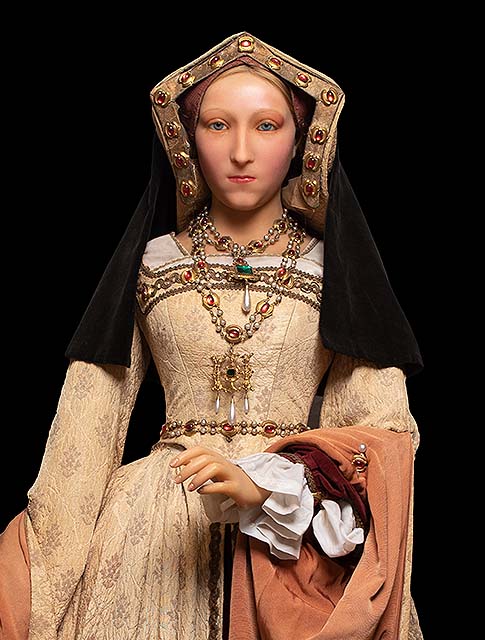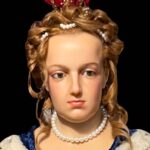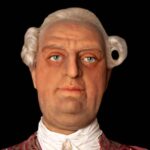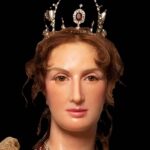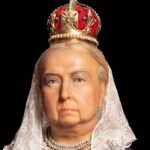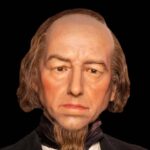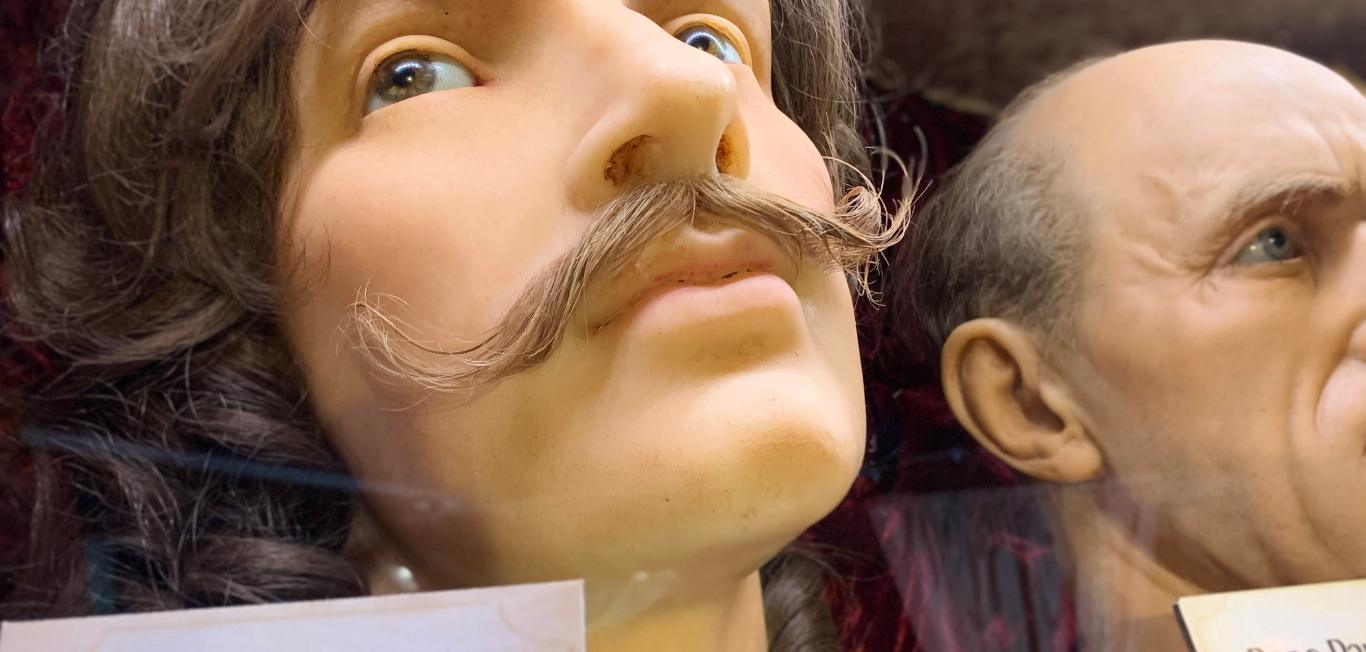Learn About Jane Seymour
Jane Seymour (1509–1537) was King Henry VIII of England’s third wife. The couple gave birth to King Edward VI. She was the daughter of Sir John Seymour of Wiltshire. Although she was not as educated as King Henry VIII’s other wives, she was skilled in house management and needlework. Also, she could write and read — with some difficulties. All these were skills considered necessary for a woman during Seymour’s times. She also possessed other skills that made her endearing to the king. For instance, she is said to have been gentle as well as sweet-natured. These traits differentiated Jane Seymour from King Henry’s other wives, especially the second one. They also made her his favorite wife.
Biography of
Jane Seymour
Jane Seymour was the sister of Edward Seymour, also known as the First Duke of Somerset. Edward became one of the most notable figures during King Henry’s reign. He was appointed Earl of Hertford and Lord High Admiral among other titles. His quick rise in royal favor resulted from his sister’s marriage to King HenryVIII. Jane Seymour died in 1537 due to postnatal complications (English Monarchs, n. d). She developed complications after giving birth to her only son. The son later became the king of England.
DID YOU KNOW?
Jane Seymour died in 1537 due to postnatal complications.
Jane Seymour Facts
Jane Seymour was born at Wolf Hall.
Jane was born at Wolf Hall, Wiltshire to the Seymour family in 1508. This was just a year prior to her future husband’s coronation. Jane was not highly educated; this was typical for most noblewomen of the day. She could read and write somewhat, but her primary talent was embroidery.
She was known to be sweet and gentle.
The contrast between Jane and her predecessor could hardly have been greater. She was soft, sweet-natured and submissive, which were all traits that the aging king liked. Henry was also drawn to her since her mother had given birth to six healthy sons. As Anne’s authority at court began to wane by 1536, many courtiers who had never trusted her started to recommend Jane as a replacement.
She was never crowned as queen.
The beginning of Jane’s reign as queen was unfortunate, since the plague and many uprisings in the north caused Henry to focus his attention elsewhere, leading to the postponement of her coronation. She was never crowned as a consequence, and she had the title of Queen Consort until her passing.
She died of puerperal fever.
For all women during this time period, regardless of social rank, inadequate hygiene, lack of information and ignorance of diseases and germs made child delivery a risky experience that many women feared. After baby Edward’s baptism, it quickly became clear that Jane was in critical condition. Although the exact cause of her death will never be known because postpartum problems were commonly referred to as “childbed fever,” numerous historians have theorized that it was puerperal fever. Henry was called to her bedside to offer the final rites after all of the doctor’s attempts to revive her had been unsuccessful.
Jane Seymour was Henry’s favorite wife.
King Henry VIII was so devastated by Jane’s passing that he secluded himself in bed for many days, wore all-black clothing for three months, and for the rest of his wretched life, insisted that the time Jane served as queen was the happiest of his career. Many believed that the fact that he was buried close to Jane when he passed away 10 years later was evidence that she was his preferred wife. Many people make fun of Jane’s popularity by claiming that, because of how brief their marriage was, she did not have much opportunity to enrage the king.
Jane Seymour’s
Early Life
Her birthdate is unknown. However, she is believed to have been born around 1504 to 1509. Jane Seymour was a descendant of King Edward II through her maternal grandfather. As a result, she was the fifth cousin of King Henry VIII, who became her husband. Her family was very rich. As a descendant of King Edward III, she had at least 100 manors in 19 nations and five castles. At some point, she served as a lady-in-waiting to two of the king’s previous wives. They included Anne Boleyn and Catherine of Aragon. These positions prepared her to be the future queen of England.
DID YOU KNOW?
As a descendant of King Edward III, she had at least 100 manors in 19 nations and five castles.
Jane’s father was part of the army that fought in Henry VIII’s French campaign that occurred in 1513. He was one of King Henry’s most trusted soldiers. For this reason, the king gave him the title of Knight of the Body. At the same time, Jane could be considered as being of royal descent. She was one of the descendants of Elizabeth Mortimer; this was Lionel of Antwerp’s granddaughter. Lionel of Antwerp was not only Duke of Clarence but also Edward III’s third surviving son (English Monarchs, n. d). Thus, Jane Seymour was born into royalty before becoming a queen herself.
While she was young, Jane Seymour was to be married to William Dormer, the son of Lady Dormer and Sir Robert. However, Lady Dormer felt that Jane Seymour did not match the social status of her son. This resulted in the breaking off of the engagement.
It was during King Henry’s stay at Wolf Hall that he first noticed the young Jane Seymour. However, Henry’s glowing affection for Jane created animosity between the latter and Queen Boleyn.
FAQs
What was Jane Seymour known for?
One of the things that Jane Seymour is known for is providing a legitimate male heir to King Henry VIII’s throne. This is something that the king’s previous wives were unable to do. At the same time, Jane Seymour is known as the only individual to be accorded a queen’s funeral during the reign of King Henry VIII of England. Also, she is the only queen to have been buried beside the king. She is known for attempting to reconcile the differences between the king and Mary — the girl he had given birth to with his first wife. The two had not been on speaking terms for years. The tension between the two originated with King Henry’s stand on the church. He had placed himself as the head of the Catholic Church, a position that was not popular with either Mary or the general English population.
What happened to Jane Seymour?
Jane Seymour succumbed to postnatal complications. Her pregnancy announcement was made in May 1537, and she delivered her son on October 12, 1537. As custom dictated, Jane Seymour did not take part in her son’s christening. Instead, she remained in her chambers until the end of the elaborate ceremony when she got to see Prince Edward. Unfortunately, she died two weeks after giving birth to her son, who later became King Edward VI. Her labor is believed to have been difficult. It lasted approximately three nights and two days. It is believed that the reason for her difficult labor was that the baby had not been well positioned in her womb. Although it is known that her death occurred following postnatal complications, it was not clear what actually led to her demise. Several theories have been developed in response to the real cause of her death. One theory suggests that she contracted puerperal fever caused by a bacterial infection contracted while giving birth. The other theory is that she died of a pulmonary embolism. Following her death, Jane Seymour was buried at St. George’s Chapel, Windsor Castle.
Who married Jane Seymour?
Jane Seymour was married to King Henry VIII of England. She was his third wife. The marriage took place following Anne Boleyn’s execution. Anne Boleyn was King Henry VIII’s second wife. King Henry VIII of England is believed to have mourned the death of his third wife, Jane Seymour, very hard. During his widowerhood, the king not only gained a lot of weight to the point of becoming obese but also developed gout and diabetes.
Was Jane Seymour a queen?
She was a queen to King Henry VIII of England. Despite her untimely death, her only son became England’s king. She was not only the king’s wife but was also his favorite of all his queens. To a larger extent, this resulted from her giving him a male heir. The fact that she was the only queen to be buried beside King Henry VIII demonstrates the love and affection that the latter had for the former. Due to childbirth-related complications, Jane Seymour was a queen for less than two years. Although she was a queen through marriage, she was never formally given this title through a ceremony, as was the custom.
